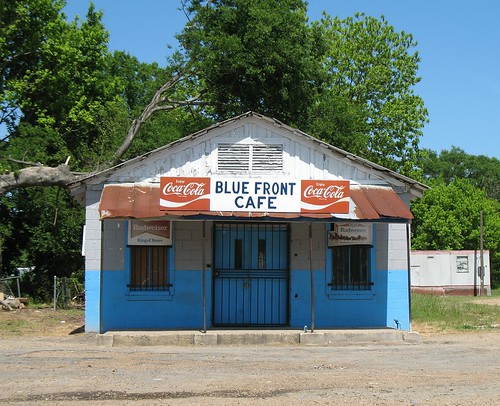 Julius Caesar had the Ides of March. The Texas Longhorns basketball program now has the February Fade.
Julius Caesar had the Ides of March. The Texas Longhorns basketball program now has the February Fade. In 2010, the February Fade was ugly, to say the least. A team with a lot of talent began the season with a 17 game winning streak. This same team then earned a number one national ranking. You could hear the fans – self included – proclaiming that maybe this was the Longhorns’ season to go beyond the Final Four.
And then it all went bad - so bad, in fact, that they finished the season with a 7 – 10 record and a first round exit from the NCAA tournament. At the time, I found myself wondering about the inability of great individual talents to play as a unit. They say that there is no “I” in TEAM – but there is a ME, and unfortunately it reared its ugly head far too many times down the stretch last year. I also found myself wondering about the inability of Coach Rick Barnes in righting the ship as it was wavering, and in finding a way to improve a team that had horrid free throw shooting at best.
The February Fade.
As we now enter March 2011, we’re witnessing many of the same traits as last season from a totally different Longhorn team. The one constant over the past two seasons? Coach Rick Barnes, of course.
 In a previous article, I presented four reasons to reject palpation-based models of care. This is no longer an issue of evidence - or lack thereof. There is plenty of research to debate not only the reliability and validity of palpation-based approaches to care, but also passive approaches to care in general. If you have a passive treatment approach, then the patient runs the risk of becoming dependent upon the care of the health guru in order to attain a resolution of their problem.
In a previous article, I presented four reasons to reject palpation-based models of care. This is no longer an issue of evidence - or lack thereof. There is plenty of research to debate not only the reliability and validity of palpation-based approaches to care, but also passive approaches to care in general. If you have a passive treatment approach, then the patient runs the risk of becoming dependent upon the care of the health guru in order to attain a resolution of their problem.Sadly, many of the assessment and treatment approaches found in the current market place are exactly that – palpation-based and passive in nature.
What is truly at stake in all of this is far more elemental. It is the issue of perception – of the role of the clinician in the care of the patient. Is it as a health guru … fixer and healer? – or as a health mentor … problem solver, investigator, teacher, coach, and educator? The future of effective and optimal health care requires a reality check. The solutions lie in the perceptions of the clinicians, the educators, and the consumers themselves.
 I have been in a bit of a writing frenzy lately. I am sure that many of you may be wondering why there has been a rather large influx of new content here recently. Granted, I like to publish to this site as frequently as life will allow. Any of you that have blogged or written anything in the past realize that the task can at times be daunting. There will almost certainly be times when you feel like you really have nothing to say or to write about in the midst of your daily grind, or simply don’t feel like you have the time to get it down on paper.
I have been in a bit of a writing frenzy lately. I am sure that many of you may be wondering why there has been a rather large influx of new content here recently. Granted, I like to publish to this site as frequently as life will allow. Any of you that have blogged or written anything in the past realize that the task can at times be daunting. There will almost certainly be times when you feel like you really have nothing to say or to write about in the midst of your daily grind, or simply don’t feel like you have the time to get it down on paper.There are times when the “time factor” is a reality, times when 24 hours in a day just don’t seem like enough time to get everything done. But there are also times when that same “time factor” just becomes a convenient excuse.
So the question becomes this: what happened to make me suddenly start writing like a wild man? Frankly, it comes down to something very simple: I called myself out on my own resolutions.
 Do you know of any other place where you can discuss “Formula One” and “Texas politics” in the same breath? The latest episode of Rhubarb Ruminations, of course! I guess both involve horses, perhaps, but the similarities end there. Here is the latest Rhubarb to give you something to ponder with spring (and the start of Formula One season) right around the corner.
Do you know of any other place where you can discuss “Formula One” and “Texas politics” in the same breath? The latest episode of Rhubarb Ruminations, of course! I guess both involve horses, perhaps, but the similarities end there. Here is the latest Rhubarb to give you something to ponder with spring (and the start of Formula One season) right around the corner.
1. In the “surely, you jest” category: the Ferrari Formula One team have recently revealed their 2011 championship contender – named the Ferrari F150. The name, in typical Ferrari fashion, is in honor of the 150th anniversary of Italy’s unification. I am sure that the tifosi will love it, especially on a beautiful fall day in September at Monza. But get this – the Ford Motor Company has threatened to file a lawsuit for trademark infringement on their F-150 truck.
Are you serious? Is there going to be some brand confusion for the average American that (frankly) has no comprehension of what a Ferrari is anyways? Or is there some brand confusion for the average global citizen who may know what a Ferrari is but really doesn’t care about a gas guzzling Ford pickup? The only thing these two have in common is lousy fuel mileage.
So what was the verdict?
 Valentine’s Day – a day that celebrates love and affection between intimate companions. Don’t worry, I know you have February 14th circled on your calendar. Your “significant other” hopes I am right, trust me.
Valentine’s Day – a day that celebrates love and affection between intimate companions. Don’t worry, I know you have February 14th circled on your calendar. Your “significant other” hopes I am right, trust me. For some, Valentine’s Day has become nothing more than a Hallmark Day, a day for mass-produced greeting cards and commercialization. Love and romance are always good for sales. Ahhh capitalism. What hath love wrought? Perhaps it could serve as the next great economic stimulus. More chocolates! More wine! More flowers! Buy buy buy! Sell sell sell!
With that said, much of the history of Saint Valentine has little to do with romance. But I am sure that many people have fond memories of Valentine’s Day. As a child, you may have handed out cards to your friends at school, hoping that they might want you to be their valentine too. Once you were a little older, it might have meant something more. Maybe that card was given to the little blond girl in your eight grade math class on whom you had a crush. Or perhaps you had just started dating someone, and there it was, a nice romantic day on which to spoil your new-found love interest. Or maybe it’s a day to just get back to basics with your spouse.
Maybe Valentine’s Day does serve a purpose of having one special day to truly make a point of enjoying that special someone’s presence in your world. But the more I think about it, the more I realize something important. Maybe every day should be Valentine’s Day. Perhaps what we need is to express (and appreciate) more love – on a daily basis – and not have it become just a once-a-year celebration.
 In 1997, I presented the results of a study on spinal evaluation techniques at the 5th McKenzie Institute International Conference in Philadelphia. The purpose of the study was to survey entry-level physical therapy educational programs regarding the spinal evaluation techniques that were taught to their students. The survey went out to all of the physical therapy educational programs in the United States, Canada, UK, Australia, and New Zealand.
In 1997, I presented the results of a study on spinal evaluation techniques at the 5th McKenzie Institute International Conference in Philadelphia. The purpose of the study was to survey entry-level physical therapy educational programs regarding the spinal evaluation techniques that were taught to their students. The survey went out to all of the physical therapy educational programs in the United States, Canada, UK, Australia, and New Zealand. To briefly summarize the results, it was found that most physical therapy programs worldwide place a very heavy emphasis on teaching palpation skills and palpation-based assessment and treatment models. These would include massage, manual mobilization, active release therapies, trigger points, and the like. Not much has changed from my own PT education in the ‘80s all the way to current 2011 educational programs. The same focus on palpation skills holds true for the educational programs of chiropractors, massage therapists, and many other alternative therapies.
But there are some major reasons to debate and reject palpation-based assessment and treatment approaches. The scientific literature on palpation has been very well-documented over the years – and the results will probably surprise you.
 I’ve had a deep interest in the blues for many years. Over time, I’ve become a student of this form of indigenous American music, poring through the history, the musical “family tree”, the psychosocial and geographical aspects. Back in 1992, I even went so far as to take a road trip through the Mississippi Delta, just to see what the region was like. It’s hard to visualize what the old bluesmen experienced in the jukes throughout the south, and even more difficult to fathom the economic status of the region in the thirties and forties.
I’ve had a deep interest in the blues for many years. Over time, I’ve become a student of this form of indigenous American music, poring through the history, the musical “family tree”, the psychosocial and geographical aspects. Back in 1992, I even went so far as to take a road trip through the Mississippi Delta, just to see what the region was like. It’s hard to visualize what the old bluesmen experienced in the jukes throughout the south, and even more difficult to fathom the economic status of the region in the thirties and forties. Be that as it may, I can’t say that I have ever been to a true, Mississippi delta juke joint. Legend has it that the bluesmen of the era would play them for money, for drinks, and for women. You had to work hard to work the crowd, and being a great performer was probably just as important as being a good musician. If you could get the joint jumpin’, then you would probably be a success. It was a measure of your status (and legacy) as a blues man.
I have been fortunate to see a few performers over the years that would fit this description of “bluesman”. Robert Randolph is just such a performer, and his performance at Antone’s on Friday night (2/4/11), with his Family Band, spoke strongly to the roots of the blues, and to the roots of his musicianship. But perhaps most importantly, it spoke to the sheer emotion and bravado of being a true performer in the purest sense of the word.
 "Running Injuries: Etiology And Recovery- Based Treatment" (co-author Bridget Clark, PT) appears in the third edition and fourth editions of "Clinical Orthopaedic Rehabilitation: A Team Approach" by Charles Giangarra, MD and Robert C. Manske, PT.
"Running Injuries: Etiology And Recovery- Based Treatment" (co-author Bridget Clark, PT) appears in the third edition and fourth editions of "Clinical Orthopaedic Rehabilitation: A Team Approach" by Charles Giangarra, MD and Robert C. Manske, PT.
 Allan Besselink, PT, DPT, Ph.D., Dip.MDT has a unique voice in the world of sports, education, and health care. Read more about Allan here.
Allan Besselink, PT, DPT, Ph.D., Dip.MDT has a unique voice in the world of sports, education, and health care. Read more about Allan here.
 Top 5 finalist in three categories: "Best Overall Blog", "Best PT Blog" and "Best Advocacy Blog".
Top 5 finalist in three categories: "Best Overall Blog", "Best PT Blog" and "Best Advocacy Blog".